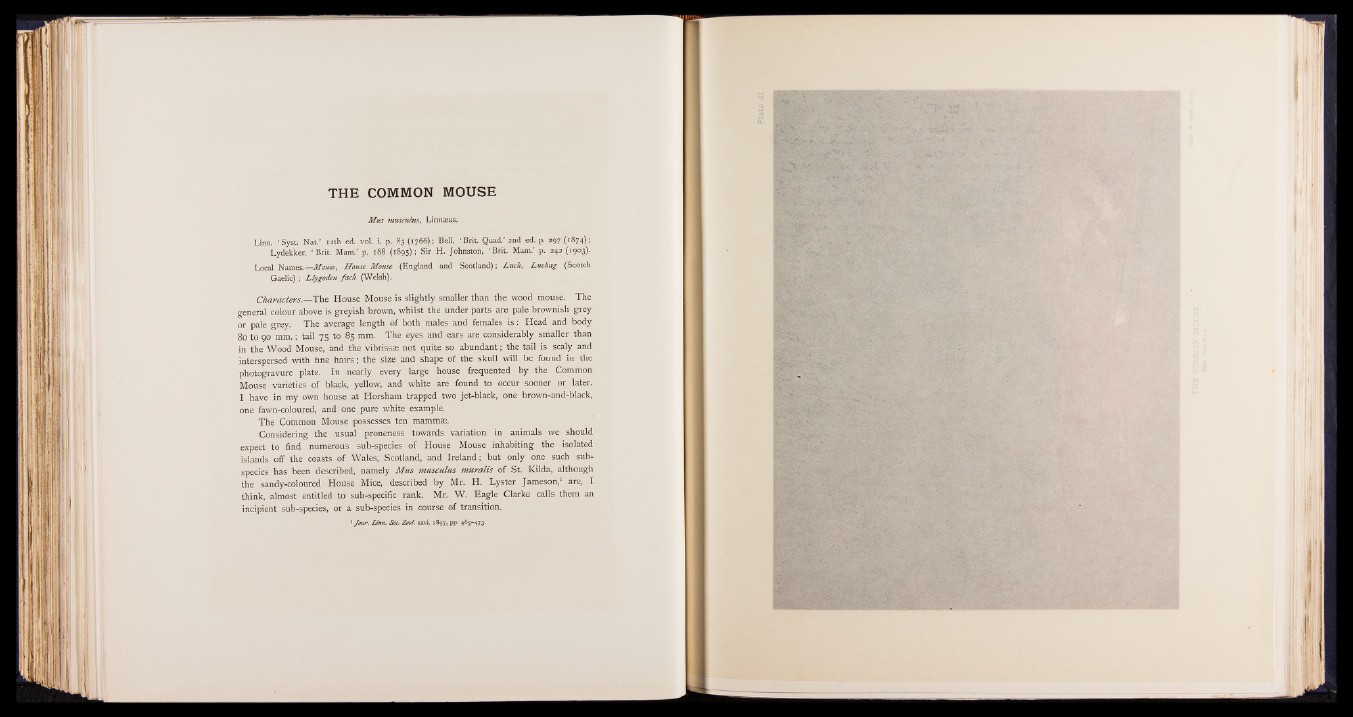
THE COMMON MOUSE
Mus musculus, Linnaeus.
L in n . ‘ S y s t . N a t .’ 12 th e i voir i. p. S 3 (1786); B e ll, 'B r i t . Qu ad .' 2nd ed. p. 297 (>874)i
L y d e k k e r , 'B r i t M am .’ p. 18 8 ( 1 8 9 5 ) ; S i r H. Jo h n s to n , 'B r i t . M am .’ p . 2 4 2 '( 19 0 3 ) .
L o c a l N am e s .— Mouse, Mouse Mouse (E n g lan d an d S c o t lan d ) ; Luck, Luchag (S cotch
G a e lic ) ; Llygoden fa ck (W e lsh ).
Characters.—The House Mouse is slightly smaller than the wood mouse. The
general qblour above is greyish brown, whilst the under parts are pale brownish grey
or pale grey. The average length of both males and females |S : Head and body
80 to 90 mm.; tail 75 to 85 mm. The eyes and ears are considerably smaller than
in the Wood Mouse, and the vibrissae not quite so abundant; the tail is scaly and
interspersed with fine hairs; the size and shape of the skull will be found in the
photogravure plate.. In nearly every large house frequented by the Common
Mouse varieties of black, yellow, and white are found to occur sooner or later.
I have in my own house at Horsham trapped two jet-black, one brown-and-black,
one fawn-coloured, and one pure white example.
The Common Mouse possesses ten mammae.
Considering the usual proneness towards variation in animals we should
expect it® find numerous sub-species of House Mouse inhabiting the isolated
islands off the coasts of Wales, Scotland, and Ireland; but only one such subspecies
has been described, namely M m musculus m uralis of St. Kilda, although
the sandy-coloured House Mice, described by Mr. H. Lyster Jameson,1 are, I
think, almost entitled to sub-specific rank. Mr. W. Eagle Clarke calls them an
incipient sub-species, or a sub-species in course of transition.
1 Jour. Unit. Soc. Zool. xxvi. 1897, pp. 465-473.